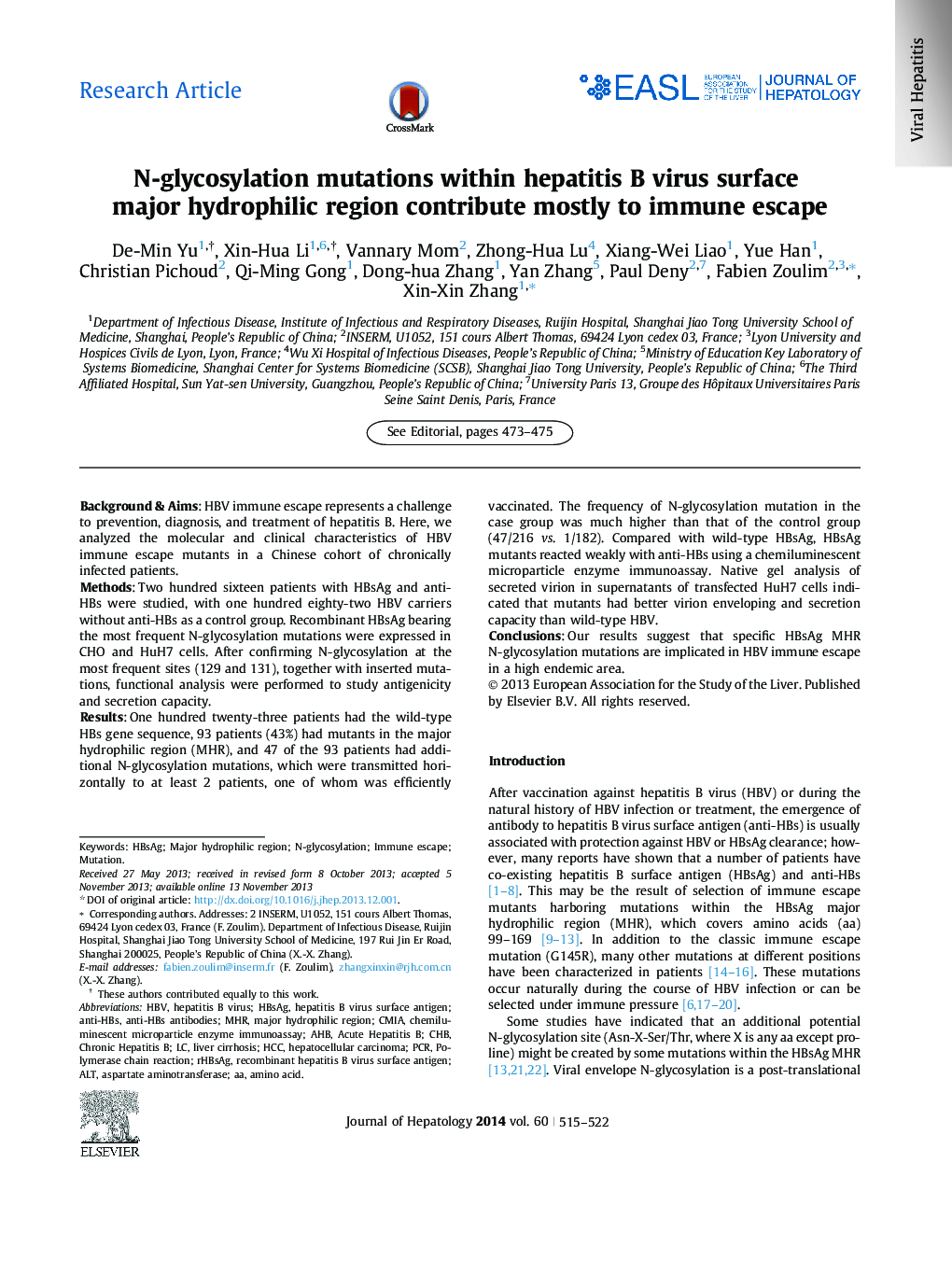| Article ID | Journal | Published Year | Pages | File Type |
|---|---|---|---|---|
| 6104199 | Journal of Hepatology | 2014 | 8 Pages |
Background & AimsHBV immune escape represents a challenge to prevention, diagnosis, and treatment of hepatitis B. Here, we analyzed the molecular and clinical characteristics of HBV immune escape mutants in a Chinese cohort of chronically infected patients.MethodsTwo hundred sixteen patients with HBsAg and anti-HBs were studied, with one hundred eighty-two HBV carriers without anti-HBs as a control group. Recombinant HBsAg bearing the most frequent N-glycosylation mutations were expressed in CHO and HuH7 cells. After confirming N-glycosylation at the most frequent sites (129 and 131), together with inserted mutations, functional analysis were performed to study antigenicity and secretion capacity.ResultsOne hundred twenty-three patients had the wild-type HBs gene sequence, 93 patients (43%) had mutants in the major hydrophilic region (MHR), and 47 of the 93 patients had additional N-glycosylation mutations, which were transmitted horizontally to at least 2 patients, one of whom was efficiently vaccinated. The frequency of N-glycosylation mutation in the case group was much higher than that of the control group (47/216 vs. 1/182). Compared with wild-type HBsAg, HBsAg mutants reacted weakly with anti-HBs using a chemiluminescent microparticle enzyme immunoassay. Native gel analysis of secreted virion in supernatants of transfected HuH7 cells indicated that mutants had better virion enveloping and secretion capacity than wild-type HBV.ConclusionsOur results suggest that specific HBsAg MHR N-glycosylation mutations are implicated in HBV immune escape in a high endemic area.
